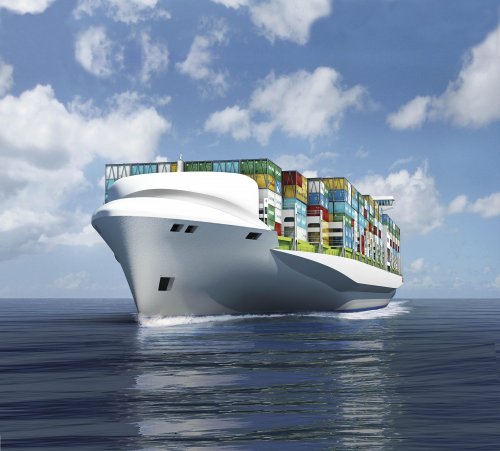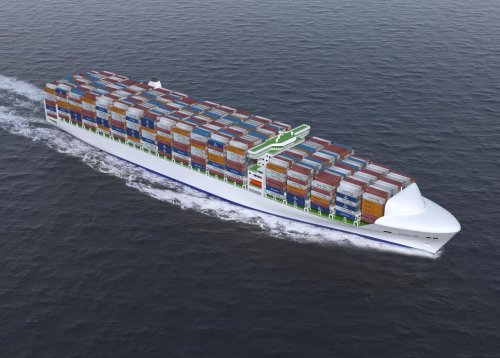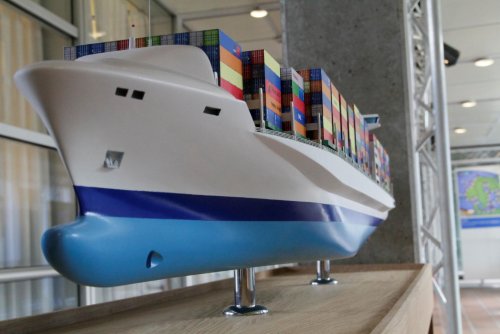Artist's impression of DNV (Det Norsk Veritas) Quantum 9000 container ship fueled by LNG (liquified natural gas).
http://www.dnv.com/binaries/quantum%209000%20technical%20paper_tcm4-451434.pdf
http://www.dnv.com/binaries/quantum%209000%20-%20dnv%20and%20man%20-%20press%20presentation%202011_03_11_tcm4-451318.pdf
Source:
http://articles.maritimepropulsion.com/article/DNV-Quantum-9000-Concept-Container-Ship14641.aspx
http://www.dnv.com/press_area/press_releases/2010/anewcontainershipconceptintroduced.asp
http://www.motorship.com/news101/improved-boxship-concept-launched
http://www.motorship.com/features101/regulation-and-classification/technology-focus-2020-from-dnv
http://www.dnv.com/binaries/quantum%209000%20technical%20paper_tcm4-451434.pdf
http://www.dnv.com/binaries/quantum%209000%20-%20dnv%20and%20man%20-%20press%20presentation%202011_03_11_tcm4-451318.pdf
Source:
http://articles.maritimepropulsion.com/article/DNV-Quantum-9000-Concept-Container-Ship14641.aspx
http://www.dnv.com/press_area/press_releases/2010/anewcontainershipconceptintroduced.asp
http://www.motorship.com/news101/improved-boxship-concept-launched
http://www.motorship.com/features101/regulation-and-classification/technology-focus-2020-from-dnv




